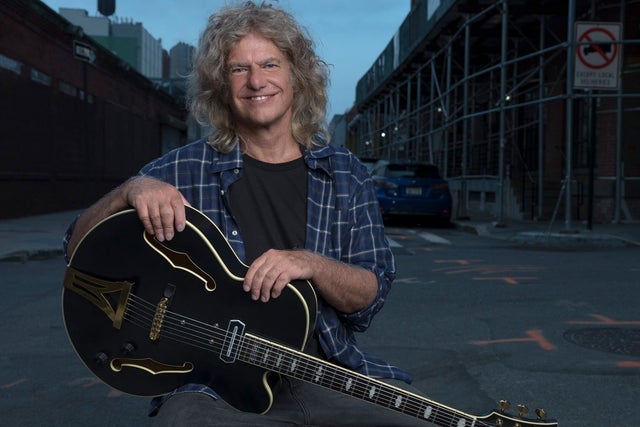From Missouri to Modern Jazz Frontlines
He came up in the Midwest, blending folk-like melodies with modern harmony, and his sound grew with the
Pat Metheny Group. Since the passing of collaborator
Lyle Mays, he has steered shows toward trio, Side-Eye, and solo formats that honor the lyric core while opening the edges. Expect a set that touches
Phase Dance,
Bright Size Life,
Last Train Home, and
Are You Going With Me?, with room to stretch between themes. The room tends to mix longtime PMG devotees, jazz students clocking voicings, and curious indie listeners who value melody and texture. A neat detail: he sometimes brings the 42-string Pikasso guitar built by Linda Manzer, and his soaring lead on
Are You Going With Me? often comes from a vintage GR-300 guitar synth.
The Night Likely Unfolds
Another quirk is his habit of linking tunes into a single narrative arc, letting grooves morph instead of stopping cold. Please note that song choices and stage elements here are educated guesses, not confirmations. The overall feel is welcoming but focused, with conversation tucked away once the quiet pieces begin.
Culture In The Quiet: Pat Metheny Fans Up Close
Quiet Fire In The Room
The crowd skews mixed in age, with worn PMG tees beside fresh conservatory hoodies and a few vintage ECM vinyl tucked under arms. You see clean sneakers, dark denim, and the occasional blazer, more small notebooks than phones once the first tune starts. Applause rises after solos rather than at big volume spikes, and a soft cheer usually greets the first notes of
Last Train Home.
The Little Rituals
Guitar heads drift closer to watch right-hand angles, while casual fans settle into the gentle sway of mid-tempo grooves. Merch leans practical: chart-like poster art, understated tour shirts, and LPs that sell quickly when a classic cut appears in the set. Between songs the talk is about tone, odd meters that felt natural, and memories of hearing PMG in theaters decades back. By the end, the mood resembles a listening session among friends, with plenty of respect for silence as part of the music.
Notes In Motion: Pat Metheny Onstage Craft
Tone, Time, and Space
Shows are largely instrumental, so the guitar carries the vocal role, singing clear melodies before darting into nimble runs. Arrangements favor space: themes are stated plainly, then rhythm players open the floor with a steady pocket that lets the harmony breathe. On songs like
Are You Going With Me?, he moves to the GR-300 voice, turning the guitar into a sustained, horn-like lead that floats over a pulse. Ballads often land on nylon-string or a warm archtop, while the band shifts dynamics by thinning textures rather than cranking volume.
Craft in the Details
A recurring live habit is the free-time intro, where he sketches chords without a beat before the drummer snaps the tune into focus. The group supports the core sound by keeping cymbals dry, bass lines clear, and keys in soft layers, so the guitar sits forward without harshness. Lights tend to be low and amber with cool blues for the synth moments, framing the music instead of chasing it. A small nerd note: he likes to re-voice endings on the spot, sliding the bass note under the same melody to color a familiar phrase in a new way.
Kindred Currents: Pat Metheny's Musical Neighbors
Kindred Ears
Fans of
John Scofield often connect with his music because both balance bluesy bite with open, elastic grooves.
Bill Frisell appeals to the same crowd that likes melody-first guitar stories and a quiet-to-loud arc built from small details. If you enjoy fleet acoustic runs and fusion fire,
Al Di Meola sits nearby stylistically, though the tone here stays gentler.
Why These Names Fit
Modern ensemble fans who chase intricate rhythm and singable lines will feel at home with
Snarky Puppy, as both acts treat groove as a conversation. Together these artists point to a listener who values lyric themes, deep time feel, and improvisation that serves the song.



